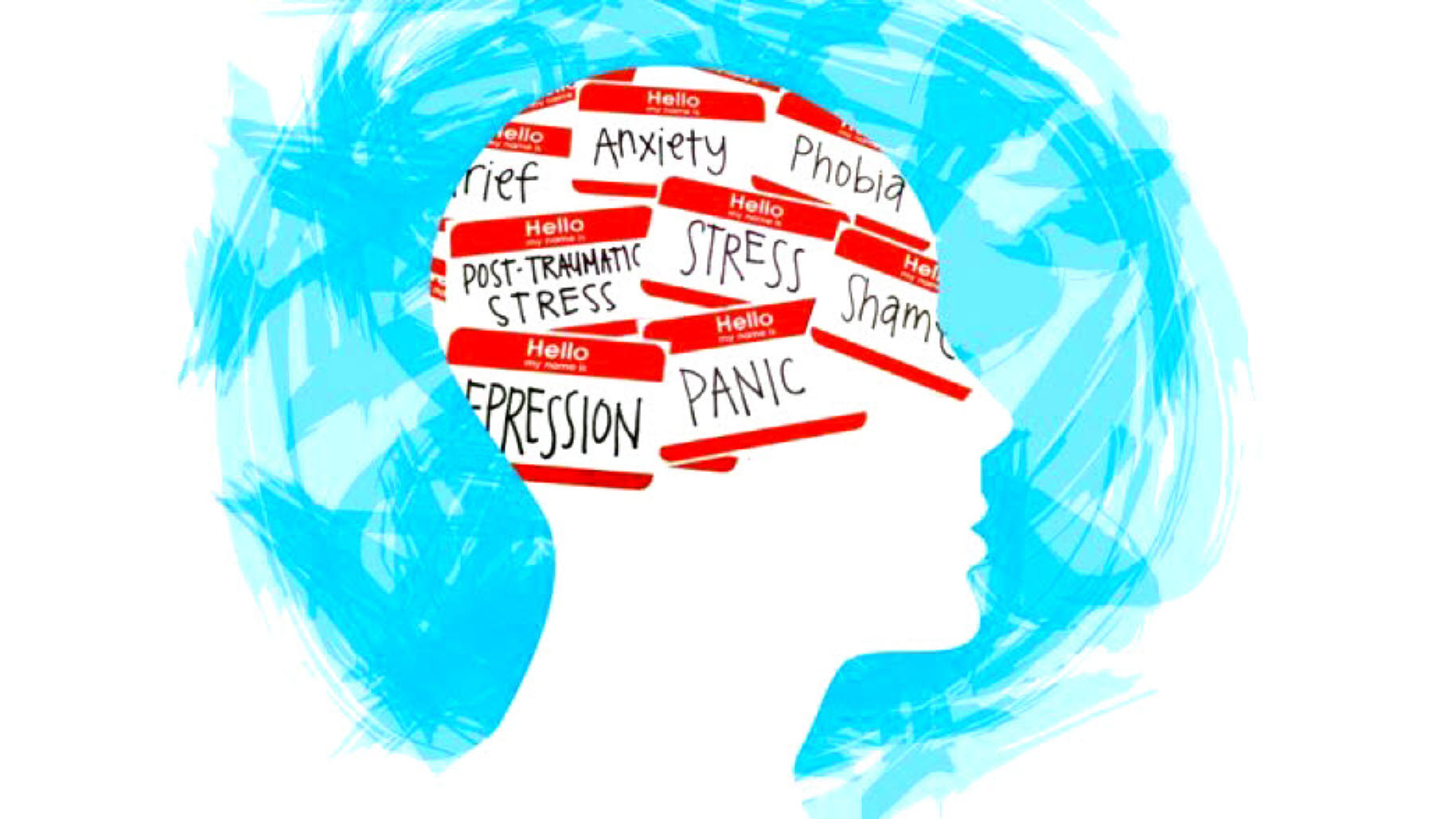James Donaldson notes: As I’m slowly getting on top of my physical health issues, I am turning more and more of my time and efforts towards mental health issues, especially pertaining to our young people and student-athletes.
Having gone through a recent bout of depression and suicidal thoughts myself, I realize now, that I can make a huge difference in the lives of so many by sharing my story, and by sharing various resources I come across as I work in this space. http://bit.ly/JamesMentalHealthArticle
Ongoing exposure to neglect, abuse, homelessness or violence causes learning and behavior problems in children. Signs of trauma and tips for helping kids who’ve been traumatized.
We tend to think of trauma as the result of a frightening and upsetting event. But many children experience trauma through ongoing exposure, throughout their early development, to abuse, neglect, homelessness, domestic violence or violence in their communities. And it’s clear that chronic trauma can cause serious problems with learning and behavior.
Trauma is particularly challenging for educators to address because kids often don’t express the distress they’re feeling in a way that’s easily recognizable — and they may mask their pain with behavior that’s aggressive or off-putting. As Nancy Rappaport, a child and adolescent psychiatrist who focuses on mental health issues in schools put it, “They are masters at making sure you do not see them bleed.”
Identifying the symptoms of trauma in the children can help educators understand these confusing behaviors. And it can help avoid misdiagnosis, as these symptoms can mimic other problems, including ADHD and other behavior disorders.
In brief, the obstacles to learning experienced by these children include:
- Trouble forming relationships with teachers
- Poor self-regulation
- Negative thinking
- Hypervigilance
- Executive function challenges
Trauma and trouble forming bonds
Children who have been neglected or abused have problems forming relationships with teachers, a necessary first step in a successful classroom experience. They’ve learned to be wary of adults, even those who appear to be reliable since they’ve been ignored or betrayed by those they have depended on.
“These kids don’t have the context to ask for help, notes Dr. Rappaport, a school consultant and associate professor of psychiatry at Harvard Medical School. “They don’t have a model for an adult recognizing their needs and giving them what they need.”
Many of these children haven’t been able to develop secure attachments to the adults in their lives, adds Jamie Howard, a clinical psychologist and head of the Trauma and Resilience Center at the Child Mind Institute. They need help to let other adults into their lives. “Kids who’ve never developed that early template that you can trust people, that you are lovable and that people will take care of you,” Dr. Howard explains, “need support to form that kind of relationship.”
One of the challenges in giving that support is that when kids misbehave, our schools often use disciplinary systems that involve withdrawing attention and support, rather than addressing their problems. Schools have very little patience for kids who provoke and push away adults who try to help them.
Instead of suspending children, Dr. Rappaport argues, schools need to work with them on changing their behavior. When a student is acting up in class, she explains, teachers need to recognize the powerful feelings they are expressing, if inappropriately.
Rather than jumping right into the behavior plan – deducting points or withdrawing privileges or suspending — Dr. Rappaport stresses the importance of acknowledging the emotion and trying to identify it. “I can see that you are REALLY angry that Andrew took the marker you wanted!” she suggests. “If you’re wrong about what the student is upset about, he’s likely to correct you.”
Acknowledging and naming an emotion helps children move towards expressing it in a more appropriate way. Communicating that you “get” him is the necessary first step, she explains, to helping a child learn to express himself in ways that don’t alienate and drive away people who can help him.
Poor self-regulation
Traumatized children often have trouble managing strong emotions. As babies and toddlers, children learn to calm and soothe themselves by being calmed and soothed by the adults in their lives, Dr. Howard notes. If they haven’t had that experience, because of neglect, “that lack of a soothing, secure attachment system contributes to their chronic dysregulation.”
In the classroom, teachers need to support and coach these children in ways to calm themselves and manage their emotions. “We need to be partners in managing their behavior,” Dr. Rappaport explains. “Co-regulation comes before self-regulation. We need to help them get the control they need to change the channel when they’re upset.” They need coaching and practice at de-escalating when they feel overwhelmed, she adds.
Negative thinking
Another challenge to traumatized kids is that they develop the belief that they’re bad, and what’s happened to them is their fault. This leads to the expectation that people are not going to like them or treat them well. As Dr. Howard puts it, “I’m a bad kid. Why would I do well in school? Bad kids don’t do well in school.”
Traumatized kids also tend to develop what Dr. Howard calls a “hostile attribution bias” — the idea that everyone is out to get them. “So if a teacher says, ‘Sit down in your seat,” they hear it as, ‘SIT DOWN IN YOUR SEAT!’” she explains. “They hear it as exaggerated and angry and unfair. So they’ll act out really quickly with irritability.”
As Dr. Rappaport puts it: “They see negative where we see neutral.” To counter this negative thinking, these students a narrative about themselves that helps them understand that they’re not “bad kids.” And learning to recognize their negative patterns of thought, like black and white thinking, is a step towards being able to change those patterns.
Dr. Rappaport notes that children from abusive homes are sometimes unable to participate in classroom activities because they are paralyzed by fear of making a mistake, and that can make them appear to be oppositional. “A mistake that might seem trivial to us becomes magnified,” she explains, “if their experience has been that minor mistakes incurred adult anger or punishment.”
They need not only support to have incremental successes they can build on in the classroom, but help to see that in this setting, making a mistake is considered a necessary part of learning.
Hypervigilance
One of the classic symptoms of trauma is hyper-vigilance, which means being overly alert to danger. “It’s physiological hyper-arousal,” explains Dr. Howard. “These kids are jumpy, they have an exaggerated startle response. They can have some big, out-of-control seeming behaviors because their fight or flight response has gone off.”
This can look like hyperactivity, she adds, leading kids who have been traumatized to be misdiagnosed with ADHD. Being chronically agitated can lead to difficulty with sleeping and chronic irritability.
In workshops, Dr. Rappaport coaches teachers on how to help kids to settle down when something in the classroom triggers an emotional outburst. When a child is escalating, the key, she says, is to “match their effect, but in a controlled way.”
The goal is to connect to their big feeling. “If you can connect with what they’re trying to tell you, they may settle. It can work even if you just make a guess — you don’t have to be right, they can correct you.”
Chronic trauma affects children’s memory, their ability to pay attention, plan, think things through, and other executive functions. Kids who have ADHD, as well as trauma, may be especially impaired in these skills.
Difficulty planning impacts not only completing tasks in school, but a child’s ability to plan his behavior, rather than acting impulsively, and deciding on the best way to communicate his needs and feelings.
One of the things that tend to upset kids who’ve been traumatized is difficulty predicting the future — not knowing what is coming is unsettling for children and creates anxiety. These kids can benefit, Dr. Rappaport notes, from repeated dry runs of what’s coming up and what they should expect.
Another executive function that may be weak is the ability to self-narrate — to mentally talk themselves through what they need to do as they are carrying out a task. It’s a skill young children learn from listening to their parents talk to them when they are babies, and, she notes, if they haven’t had the experience they may need help developing the skill.
Focus on positive attention
In addition to connecting with kids who’ve been traumatized, and helping them build missing skills, Dr. Rappaport emphasizes the importance of giving them as much positive attention as possible.
Kids who have experienced chronic neglect tend to be better at getting attention by provoking the adults they depend on than by complying with expectations. “Negative attention is fast, predictable and efficient,” she notes. “We need to make positive attention as fast, predictable and efficient.”
But she adds that positive attention includes not only praising them for desired behavior but expressing warmth and kindness that aren’t necessarily earned.
Surprising kids with “random acts of kindness” can help wean them from habits of acting out to get attention. “When a kid is acting out and sucking the oxygen out of a classroom,” she notes, “some teachers have found it works to set their phones to buzz every 5 minutes to give the kid positive attention.”
Dr. Rappaport offers tools for understanding and managing disruptive behavior in the classroom in her book, The Behavior Code: A Practical Guide to Understanding and Teaching the Most Challenging Students, written with behavioral analyst Jessica Minahan.




